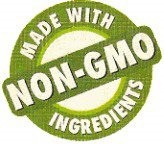The Center For Food Safety recently touched off a controversy by using a misleading and manipulative term - “Agent Orange Corn” to describe a biotech (GMO) trait working its way through the regulatory process. The technology will make corn, and later other crops, tolerant to a herbicide named 2,4-D. In the early 1960s that was one ingredient in a defoliant mix used by the US military in Vietnam; however, a one minute Wikipedia search shows that the terrible health issues with Agent Orange were caused by an unrecognized dioxin contaminant in the other herbicide in the mix. Since that time, 2,4-D has passed decades of increasingly strict safety reviews. It still used in 70 countries and is a common ingredient in the products homeowners use to control weeds in their lawns. Such facts have not prevented elements of the blogosphere, Organic and environmental community from spreading the disinformation. The credulous reception of this message suggests that there is a need to explain the importance of chemical weed control to the non-farming public.
Weeds are serious business. Ever since humans began to farm more than 10,000 years ago, they have battled weeds. It has been a struggle of literally, “Biblical proportions.” In Moses’ narrative of “The Fall” in the Hebrew scriptures (written ~4000 BCE), Adam and Eve are not only removed from the Garden of Eden, they were each given a specific curse which would continue to effect their respective sexes: Eve got “pain in childbirth.” Adam got weeds. “Accursed be the soil because of you! …It will yield you brambles and thistles… By the sweat of your face will you earn your food ...” (Genesis 3:16-19). In developed nations like the US, this “curse” falls mainly on the >1% of the labor force that still farms. The rest of us need to understand their situation.
For millennia there were two ways to grapple with weeds - pull or hoe them with intense human labor, or tolerate their yield-limiting effects. Then, in the early 18th century the ancient battle with weeds began to change. An English agronomist named Jethro Tull (not the epic rock band), began promoting “horse-hoe husbandry.” Farmers could use simple, animal-drawn machinery to plant crops in neat rows and then physically destroy the weeds in between (tillage). Crop yields increased as did the amount of land that one individual could farm. Tractors accelerated these trends. However, there was an environmental downside.
Mechanical tillage greatly increased soil erosion and the water pollution associated with it. In some areas tillage contributed to the “Dust Bowl.” As soil is tilled and re-tilled, it declines in its ability to store nutrients and to capture and hold rain water. Beyond these issues, tillage did not fully remove ”Adam’s curse.” Weeds like Canada thistle and Native Bindweed are quite efficiently spread over fields by tillage equipment.
Though soil degradation continued, the need for tillage was essentially unquestioned until 1943 when Edward Faulkner wrote his radical book, “The Plowman’s Folly,” questioning the need for tillage in agriculture. That idea, and the advent of chemical herbicides, led scientists and farmers to explore ways to farm without major soil disruption. In 1960 farmers began the first commercial-scale attempts to farm without plows or harrows. The “No-Till” movement began.
The original drivers for attempting “No-till” were soil erosion and fuel costs. It soon became clear that “no-till farming” had many more advantages: reduced water pollution, rainwater conservation, and restoration of soil quality. As no-till advanced, some farmers were not only dealing with the curse of weeds, but also doing so in a way that was far better for the environment than in the old days of “the plow.” The introduction of herbicide tolerant biotech crops (GMO) in the late 1990s increased the adoption of no-till farming methods. There is much more room for adoption of no-till and related, sustainable farming advances, but this is clearly the direction we need to go.
Unfortunately, the curse of weeds remained. It was widely expected that weeds would eventually be selected which were resistant to the herbicides used on biotech crops. This had happened with many classes of chemicals before biotech. The slight surprise was how long it took. Several important weeds have now become resistant to “Roundup®” starting yet another chapter in the ancient battle with weeds. What farmers can do is to follow “resistance management practices” by switching herbicide “modes of action” and other methods to stay a step ahead of their old enemy. The 2,4-D resistance trait in the recent controversy is being developed specifically for that purpose. That, and other new herbicide resistant crops that are in the pipeline, would be welcomed by farmers still battling “Adam’s curse” of weeds, and they will hopefully help even more farmers maintain, or make the challenging transition to no-till farming.
There is more at stake than progress with no-till. Since 2007, we have entered a period of volatile global food prices and supply problems that are unprecedented in modern history. We are trying to feed more people, feed many of them better than in the past, and to do so in a time of climate change that will only make farming riskier. This is no time for non-farmers to begrudge the farmers any tools which pass muster in our regulatory framework. The weeds have shown that they will always be there, as will be the need to deploy new technologies in a prudent manner.

